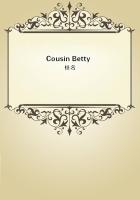The present edifice, called New Bedlam, was begun to be erected anno 1675, and finished the following year.It is built of brick and stone; the wings at each end, and the portico, being each of them adorned with four pilasters, entablature and circular pediment of the Corinthian order.Under the pediment are the King's arms, enriched with festoons; and between the portico and each of the said wings is a triangular pediment, with the arms of the City; and on a pediment over the gate the figures of two lunatics, exquisitely carved.The front of this magnificent hospital is reported to represent the Escurial in Spain, and in some respects exceeds every palace in or about London, being 528 feet in length, and regularly built.The inside, it is true, is not answerable to the grand appearance it makes without, being but 30 feet broad, and consisting chiefly of a long gallery in each of the two storeys that runs from one end of the house to the other; on the south side whereof are little cells, wherein the patients have their lodgings, and on the north the windows that give light to the galleries, which are divided in the middle by a handsome iron gate, to keep the men and women asunder.
In order to procure a person to be admitted into the hospital, a petition must be preferred to a committee of the governors, who sit at Bedlam seven at a time weekly, which must be signed by the churchwardens, or other reputable persons of the parish the lunatic belongs to, and also recommended to the said committee by one of the governors; and this being approved by the president and governors, and entered in a book, upon a vacancy (in their turn) an order is granted for their being received into the house, where the said lunatic is accommodated with a room, proper physic and diet, gratis.
The diet is very good and wholesome, being commonly boiled beef, mutton, or veal, and broth, with bread, for dinners on Sundays, Tuesdays, and Thursdays, the other days bread, cheese, and butter, or on Saturdays pease-pottage, rice-milk, furmity, or other pottage, and for supper they have usually broth or milk pottage, always with bread.And there is farther care taken, that some of the committee go on a Saturday weekly to the said hospital to see the provisions weighed, and that the same be good and rightly expended.
18.Basinghall, or Bassishaw Ward, consisteth only of Basinghall Street, and a small part of the street along London Wall.
The public buildings of this ward are Blackwell Hall, Masons' Hall, Weavers' Hall, Coopers' Hall, Girdlers' Hall, and St.Michael Bassishaw Church.
Blackwell Hall is situated between Basinghall Street on the east, and Guildhall Yard on the west, being formerly called Bakewell Hall, from the family of the Bakewells, whose mansion-house stood here anno 1315, which falling to the Crown, was purchased by the City of King Richard II., and converted into a warehouse and market for woollen manufactures; and by an act of common council anno 1516, it was appointed to be the only market for woollen manufactures sold in the City, except baize, the profits being settled on Christ's Hospital, which arise from the lodging and pitching of the cloth in the respective warehouses, there being one assigned for the Devonshire cloths, and others for the Gloucester, Worcester, Kentish, Medley, Spanish cloths, and blankets.The profits also of the baize brought to Leadenhall are settled on the same hospital.
These cloths pay a penny a week each for pitching, and a halfpenny a week resting; stockings and blankets pay by the pack, all which bring in a considerable revenue, being under the direction of the governors of Christ's Hospital.This hall was destroyed by the Fire, and rebuilt by Christ's Hospital, anno 1672.The doorcase on the front towards Guildhall is of stone, adorned with two columns, entablature, and pediment of the Doric order.In the pediment are the King's arms, and the arms of London under them, enriched with Cupids, &c.
19.Cripplegate Ward is usually divided into two parts, viz., Cripplegate within the walls and Cripplegate without.
The principal streets and places in Cripplegate Ward within the walls are Milk Street, great part of Honey Lane Market, part of Cateaton Street, Lad Lane, Aldermanbury, Love Lane, Addle Street, London Wall Street, from Little Wood Street to the postern, Philip Lane, most of Great Wood Street, Little Wood Street, part of Hart Street, Mugwell Street, part of Fell Street, part of Silver Street, the east part of Maiden Lane, and some few houses in Cheapside to the eastward of Wood Street.
The principal streets and places in Cripplegate Ward Without are Fore Street, and the Postern Street heading to Moorfields, Back Street in Little Moorfields, Moor Lane, Grub Street, the south part to the posts and chain, the fourth part of Whitecross Street as far as the posts and chain, part of Redcross Street, Beach Lane, the south part of Golden Lane as far as the posts and chain, the east part of Golden Lane, the east part of Jewin Street, Bridgewater Square, Brackley Street, Bridgewater Street, Silver Street, and Litton Street.
The public buildings in this ward are Sion College, Barber-Surgeons'
Hall, Plasterers' Hall, Brewers' Hall, Curriers' Hall, the churches of St.Mary Aldermanbury, St.Alphege, St.Alban, Wood Street, and St.Giles, Cripplegate.















